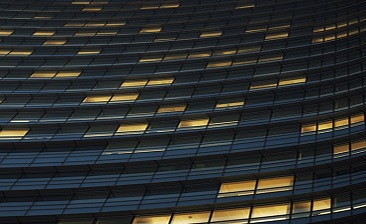
Acea for World Energy Saving Day
The Pantheon (word that comes from the Greek pan, all, and theòs, divinity) is one of the most iconic and famous monuments of Rome. In the last 2,000 years it has contributed to represent the greatness of Rome in its long journey.
The Pantheon was built in 27 BCE at the behest of Marcus Vipsanius Agrippa, son-in-law and collaborator of Emperor Augustus.
Over the centuries it has seen damaging fires, phases of reconstruction, long periods of abandonment and even looting during the barbarian invasions. In 609 CE the Pantheon was donated by the Byzantine emperor Phocas to Pope Boniface IV, who consecrated and dedicated it to St. Mary and Martyrs.
The internal space mostly determines the greatness of this monument: a single circular room covered by a large hemispherical dome. The circular structure refers to the Greek philosophy that considered the sphere as the symbol of celestial vault and creation.
After centuries, the Pantheon is still there, and is reborn again due to the technology used in the artistic lighting project of Acea Group in collaboration with Roma Capitale - Simu Department.
The Pantheon dome is among the largest in the world and is located in Piazza della Rotonda in Rome. The circular window at the center of the dome, called oculus (or also "eye"), has a diameter of 9 metres. The story goes that a bronze pine cone, currently preserved in the Vatican Museums, surmounted the dome but was carried away by the malevolent spirits who escaped when the temple was consecrated by Pope Boniface. This let the light that creates characteristic chiaroscuro effects in the Pantheon flow.
To answer this question, we need a brief description of the Pantheon and in particular of its interior floor that is curved outwards, therefore when it rains the water is directed towards a few manholes. Many say that it does not rain in the Pantheon, but this impression is given by the shape of the floor, which is why the water does not stagnate inside the monument.
The interior of the Pantheon is characterized by 28 coffers, which become smaller as they get closer to the oculus. Consequently, the materials become lighter and lighter as a matter of stability of the walls. Inside there are seven niches, one for each planet and for each deity related to it.
The term Pantheon means temple of all gods: present, past and future. The sources available regarding the Pantheon's architecture state that the architect Lucius Cocceius Auctus designed it.
Inside are buried illustrious artists and the Royals of Italy, including Raffaello Sanzio (also known as Raphael), Victor Emmanuel II, Umberto I and Margherita of Savoy.
For several years, Acea has been enhancing the historical monuments of Rome due to artistic lighting. A team of people with humanistic and technical skills are involved in this: they blend history and innovation together.
The first step of the project is always the inspection of the monument to understand what the original intentions of the architects were. Each light design intervention always proposes its own interpretation in a monumental context: each lighting configuration tells a different story.
Subsequently, Acea's light designers take detailed measurements with laser scanners to understand where to position the new luminaires. This way, it is possible to have a clearer and more realistic vision of the project in progress. The last step is the elaboration of the 3D model to simulate the positioning of the lights and calibrate the brightness on the surface of the monument.
The Pantheon is a perfect sphere where balance and solidity meet to create a unique monument. Today, these two principles are joined by technological innovation that has allowed Acea to operate by reducing energy consumption and in favour of sustainability. For this new project the team of light designers used the latest LED technology, innovative and sustainable, but above all capable of valorizing one of the most important monuments in Rome, offering a brand new night view of it.
With the help of Wi-Fi and Bluetooth technology it was possible to create a visually minimal project. Once cables, uprights and brackets of the old system were removed, projectors that can be activated remotely were chosen: they made it possible to create a completely integrated lighting system.
Roma Capitale and Acea inaugurate the new artistic lighting of the Pantheon
The new artistic lighting of the Pantheon was inaugurated in July 2020. The atmosphere created by the lights was accompanied by the presence of the Orchestra of the Accademia Nazionale di Santa Cecilia who, with a tribute to Ennio Morricone, made every detail of the monument even more impressive. The new system, with the use of innovative and sustainable technologies, in fact enhances one of the symbolic monuments of Rome and at the same time offers a brand new night view of the entire Pantheon square.
Discover the latest news and initiatives of the Acea Group

Acea for World Energy Saving Day

Visit the virtual museum about the history of the Acea Group

The channel for the commercial requests on land urbanisation

Acea turns the spotlight on the Rome Film Festival 2023

Acea is in the "Gold class" in the .trust research

Read more about our culture of inclusiveness